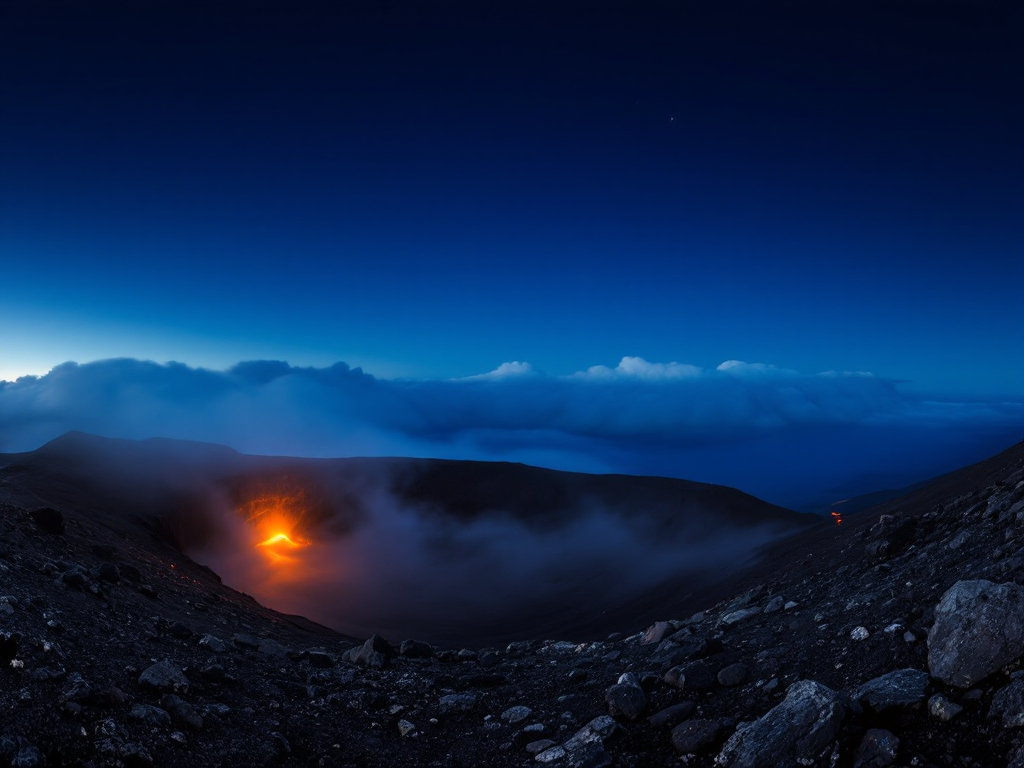Current Episode of Kīlauea’s Eruption Begins Unexpectedly
Kīlauea volcano, located within Hawaiʻi Volcanoes National Park, began its latest eruptive activity, known as episode 17, unexpectedly at 10:15 p.m. Hawaii Standard Time (HST) on April 7, 2025. This timing defied the earlier predictions by scientists at the U.S. Geological Survey’s Hawaiian Volcano Observatory (HVO), which had initially forecasted that this eruptive phase would commence between April 10 and April 13. The sudden overflow of lava from the south vent has initiated significant geological activity within Halemaʻumaʻu crater, situated in Kīlauea’s summit caldera known as Kaluapele.
Seismic tremor activity notably increased shortly before the eruption began, with reports indicating tremors becoming pronounced around 10:00 p.m. HST, hinting at imminent volcanic activity. Initially, the eruption produced relatively modest “low spatter fountains” ranging from 15 to 30 feet (approximately 4.5 to 9 meters) in height, as per observations from the USGS.
The episode attracted considerable public interest, evident in the estimated 1,200 viewers who tuned into the livestream provided by the USGS to track developments on Tuesday morning. Historically, Kīlauea has seen lava fountaining reach impressive heights, occasionally surpassing 1,000 feet (305 meters) during previous eruptive episodes. While the current activity is lower, scientists remain vigilant for potential escalation.
“This type of episodic fountaining has not been observed in any other eruptions since 2020, highlighting unique characteristics of the current volcanic activity,” reported the HVO.
Despite the eruption’s intensity, all volcanic activity remains confined within the boundaries of Hawaiʻi Volcanoes National Park, posing no immediate threat to residential areas or infrastructure. However, park visitors and nearby communities have been cautioned about hazards such as volcanic gas emissions—particularly elevated sulfur dioxide (SO2) levels, which could surpass 50,000 tonnes per day during peak fountaining periods—and windblown volcanic glass fibers known as “Pele’s hair.”
Chronology and Details of the Ongoing Eruption
The ongoing eruption at Kīlauea commenced on December 23, 2024, and has been characterized by intermittent, episodic activities, consisting of multiple eruptive phases separated by brief pauses. This current event is the seventeenth episode, all confined within the summit caldera. Throughout this eruption, no significant volcanic activity has been observed along Kīlauea’s East Rift Zone or Southwest Rift Zone, indicating the situation remains stable and localized.
Scientists emphasize the importance of continuous monitoring, given that volcanic activity can rapidly escalate, increasing local hazards and impacting air quality due to volcanic gas emissions. The USGS regularly updates hazard reports and issues advisories for park visitors and residents, underscoring the volatility and dynamic nature of volcanic activity.
“With episodes like these, we always monitor closely for any signs of increased volcanic tremors, gas emissions, and lava output, which could indicate further changes within the volcano’s system,” a USGS spokesperson noted.
Officials at Hawaiʻi Volcanoes National Park have implemented safety measures to manage crowds and provide educational resources, ensuring that visitors remain informed about safety protocols and potential risks associated with volcanic eruptions.
Historical Impact and Geologic Significance
Kīlauea, one of the world’s most active volcanoes, has a long-standing reputation for frequent eruptions, shaping much of the geographic landscape of Hawaiʻi’s Big Island. Its activity has historically alternated between relatively peaceful eruptions that attract tourists and more vigorous episodes capable of significant lava output and environmental impact. Previous eruptions have reshaped the island’s landscapes, significantly altering ecosystems, impacting local economies heavily reliant on tourism, and occasionally displacing communities.
The eruption of 2018 remains one of Kīlauea’s most impactful events, lasting approximately four months and leading to the destruction of over 700 homes. Unlike the devastating East Rift Zone eruption of 2018, the current activity has remained restricted within the summit caldera, greatly reducing the immediate threat to populated areas.
Geologists and environmental experts stress the importance of carefully tracking volcanic activity, noting that elevated gas emissions and volcanic debris could have implications on air quality and environmental health across the region. Continued volcanic activity could also impact agriculture, water quality, and local wildlife habitats. Residents and local authorities remain well-prepared due to rigorous monitoring protocols established following previous eruptions.
“Historical eruptions have taught us to expect the unexpected,” explained Dr. Kayla Mitchell, a volcanologist specializing in Hawaiian volcanism. “Our preparations and quick response remain integral to mitigating risks and ensuring public safety.”
As Kīlauea continues to display active volcanic phenomena, the scientific community and local authorities will remain on high alert, carefully prepared to address any changes or escalations in eruptive activity. This vigilance underscores the dynamic and unpredictable nature of volcanic eruptions, reinforcing both scientific curiosity and necessary public caution.


